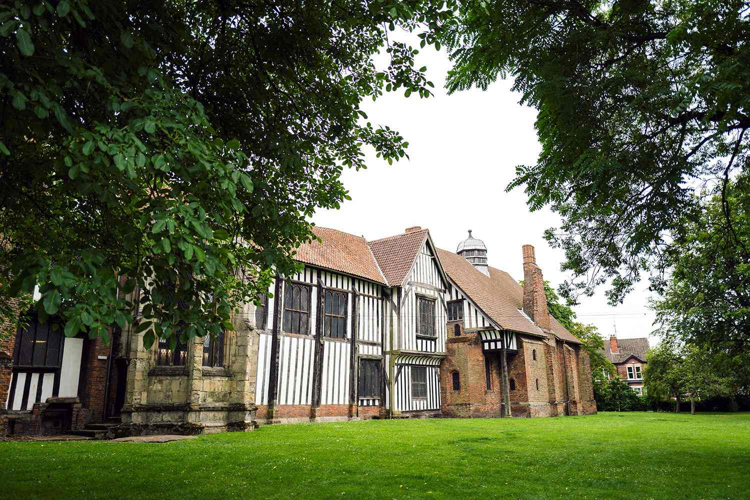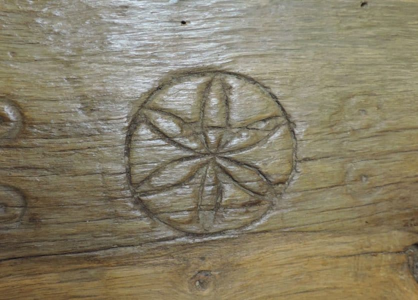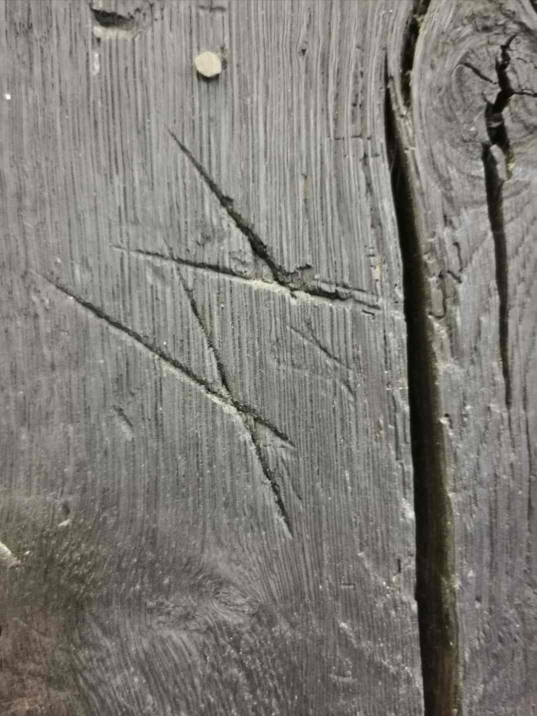Archaeologists discovered "witch marks" in a medieval estate.
Gainsborough Old Hall is located in the east of England and is one of the best-preserved late medieval mansions in Britain (excluding royal estates). It was built in 1460 by Sir Thomas Burgh.
The Burgh family was wealthy and noble, and quite capable of defending themselves—they often had to protect their lands from greedy neighbors. King Henry VIII visited Gainsborough Old Hall twice. The first visit was in 1509, and the second in 1542, along with his fifth wife, Queen Catherine Howard.

After her time at Gainsborough, the queen was accused of infidelity and executed. Whether this is connected to the fact that Henry VIII met Catherine Parr, the widow of Edward Burgh (the grandson of the estate's founder), at the mansion is unknown. However, three years later, she became his sixth and final wife.
Later, the estate passed into the hands of the Hickman merchant family from London, and it is now considered a state monument. Its appearance has changed little over the centuries: it is an elongated building with a tower in the northeast corner. The great hall with its intricate roof and the most complete medieval kitchen in Britain have been preserved.
Members of the organization English Heritage (Historic Building and Monuments Commission for England) were intrigued by the marks scratched or painted on the internal and external walls of the building. For two years, they mapped the locations of these marks and tried to understand their meanings.
Most of the marks are found in the wing designated for servants. However, some are inscribed directly in the great hall of Gainsborough Old Hall. It was in the great hall that researchers discovered a small pentagram, which clearly associates with the casting of a curse.
Next to the pentagram is an inverted name "Hickman" (the estate's owner since 1596), indicating that he was the target of the magical influence. The practice of distorting a name during the casting of a spell was widely used in Roman and Anglo-Saxon times, but such curses had not been found on English Heritage sites (Medieval and later) before.
However, the majority of the graffiti and reliefs found consist of so-called witch marks, which, unlike the cursed pentagram, do not symbolize any malevolent influence. Typically, these are circles with hexagons made of petals inside—traps for demons.

These traps were symbols of apotropaic (from the Greek "to ward off") protective magic. It is believed that these signs repel or drive away evil. Despite the name (witch marks), they were intended to protect the inhabitants of the estate from witches, demons, and curses.
Some apotropaic symbols are often viewed by ethnographers as a form of sympathetic magic, where, for example, the ritual smoking of a newly built structure protects it from fire and lightning strikes: literally "fighting fire with fire." More than a hundred such "smoky marks" have also been found on the walls of Gainsborough Old Hall—its owners sought to protect themselves from fires.

Apotropaic magic was evidently widespread in English society at that time. Researchers have found its symbols not only in ancient houses but even on the walls of Christian temples, from the Middle Ages almost until the end of the Modern period.
In 2019, hundreds of witch marks were discovered by archaeologists on the walls of a cave system in East Midlands (Central England), where hermits lived. Apparently, even Christian monks believed that there could never be too much protection from evil.